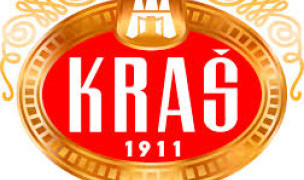 23 Terms
23 TermsHome > Terms > Kazakh (KK) > нео-импрессионизм
нео-импрессионизм
Neo-Impressionism is the specific name given to the Post-Impressionist work of Seurat and Signac and their followers. Both Camille and Lucien Pissarro had a Neo-Impressionist phase and their work continued to bear strong traces of the style. Neo-Impressionism is characterised by the use of the Divisionist technique (often popularly but incorrectly called pointillism, a term Signac repudiated). Divisionism attempted to put Impressionist painting of light and colour on a scientific basis by using optical mixture of colours. Instead of mixing colours on the palette, which reduces intensity, the primary-colour components of each colour were placed separately on the canvas in tiny dabs so they would mix in the spectator's eye. Optically mixed colours move towards white so this method gave greater luminosity. This technique was based on the colour theories of M-E Chevreul, whose De la loi du contraste simultanée des couleurs (On the law of the simultaneous contrast of colours) was published in Paris in 1839 and had an increasing impact on French painters from then on, particularly the Impressionists and Post-Impressionists generally, as well as the Neo-Impressionists.
- Loại từ: noun
- Từ đồng nghĩa:
- Blossary:
- Ngành nghề/Lĩnh vực: Art history
- Category: General art history
- Company: Tate
- Sản phẩm:
- Viết tắt-Từ viết tắt:
Ngôn ngữ khác:
Bạn muốn nói gì?
Terms in the News
Featured Terms
Người đóng góp
Featured blossaries
Browers Terms By Category
- Wireless networking(199)
- Modems(93)
- Firewall & VPN(91)
- Networking storage(39)
- Routers(3)
- Network switches(2)
Network hardware(428) Terms
- Action toys(4)
- Skill toys(3)
- Animals & stuffed toys(2)
- Educational toys(1)
- Baby toys(1)
Toys and games(11) Terms
- Prevention & protection(6450)
- Fire fighting(286)
Fire safety(6736) Terms
- General Finance(7677)
- Funds(1299)
- Commodity exchange(874)
- Private equity(515)
- Accountancy(421)
- Real estate investment(192)
Financial services(11765) Terms
- SAT vocabulary(5103)
- Colleges & universities(425)
- Teaching(386)
- General education(351)
- Higher education(285)
- Knowledge(126)






